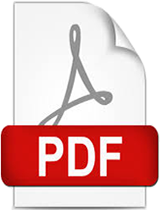
Economic & Sector Work :: Public Expenditure Review
Democratic Republic of Congo - Public Expenditure Review (Vol. 1 of 2) : Executive Summary
Attachments [ 0 ]
More Details
This report is based on the work carried out during the second half of 2002 in close collaboration with the Democratic Republic of Congo (DRC) government. It is part of a full range of efforts undertaken since July 2001 by the World Bank and the International Monetary Fund, the goal of which is to help the DRC set in place a modern and viable public expenditure management system, specifically capable of tracking the destination of resources and assessing the quality of the work and services produced with their assistance, particularly as regards expenditures of potential benefit to the poorer segments of the population. Also, the World Bank's Transitional Support Strategy for the DRC, dated June 2001, had proposed that a public expenditure review (the review) be performed in order to make the departments more effective and improve the transparency of public resource management. In this regard, it should be noted that the chapter one analysis led to the World Bank's decision to undertake more in-depth work on the following subjects: (i) management of so-called common expenditures, (ii) management of public finances at the local level, and (iii) governance in general, in relation to public service delivery. Chapters two and three were widely used in preparing the country status reports on the health and education sectors, which are now being completed, while chapter four served as a background paper for the transportation sector. Similarly, the chapter five analysis was used: (i) as the first HIPC AAP1 (Heavily-Indebted Poor Country Assessment and Action Plan) report concerning the tracking of poverty reducing public spending, (ii) to assist the government in developing an action plan to improve the capacity to track the execution of public expenditures in general and pro-poor expenditures in particular, and (iii) in developing both the preliminary and final documents within the context of the DRC's joining the HIPC Initiative in July 2003. This report places an emphasis on (i) budget preparation and presentation, (ii) budget execution and public accounting, (iii) cash management, and (iv) public finances at the provincial level.
Comments
(Leave your comments here about this item.)